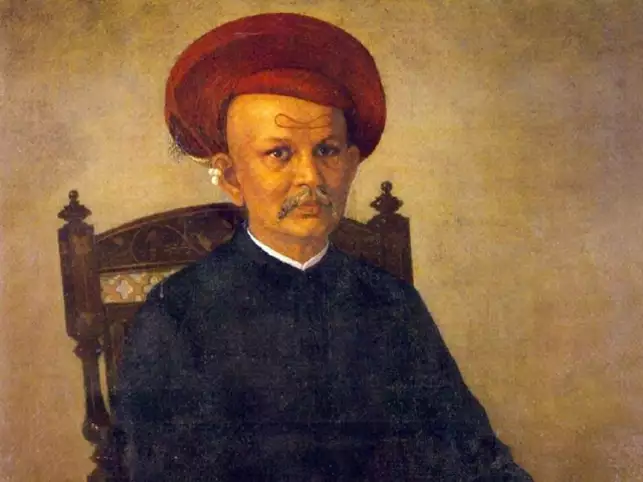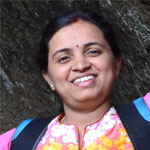Raja Ravi Varma’s paintings cannot be forgotten. Be it the gracious Saraswati, mesmerising Shakuntala, beautiful Sita – his paintings adorned prayer and living rooms of the common man and royalty alike. With the coming of Varma’s lithographs, it became accessible to all, thus gracing shops and other commercial establishments as photo frames and calendars. Recently, one of his paintings ‘Damayanti’ was sold for ₹11 crore, and even today his artworks are priced in millions. Yet, for such a prolific painter, his artistic journey was fraught with troubles.
Born in 1848 in Killimanoor in Travancore, he was the son of a well-known Namboodri Brahmin, Ezhumavil Neelakanthan Bhattatiripad. He and his siblings – Goda Varma, Raja Raja Varma, and Mangala Bayi, were tutored in a wide array of subjects from Sanskrit, astrology, to drawing and music. In fact, the knowledge of Sanskrit literature was of great help to Ravi Varma in painting Puranic scenes so vividly.
His family was connected with the royal family of Travancore, who were great supporters of art. Ravi Varma first visited the court when he was just 13, and during one of his subsequent visits he gifted the king, Ayilyam Thirunal, paintings of goddesses that he had drawn. This impressed the Maharaja so much that he allowed Ravi Varma to stay at the palace, studying and observing artists, art books and pictures. Ravi Varma’s earlier paintings were done in charcoal and chalk as he did not have access to European paints and brushes. He used to make his own colours as well. His uncle Raja Raja Varma who was an amateur painter was his initial teacher. Though the palace had a famous European portrait painter Ramaswamy Naicher, he refused to teach Ravi Varma. Similarly Varma did not have any luck with a visiting British painter Theodore Jenson, who refused to take in an Indian disciple. Yet, Varma did not give up. He watched, observed and learnt.It was at the palace he learnt the techniques of Tanjore paintings from a Madurai painter, Alagiri Naidu. Someone gifted him a box of oil colors and he started experimenting, perfecting his art form. At the age of 18, he married Pururuttathi Nal Bhageerathi from the royal family of Mavelikara, and had five children.
In 1870 he got his first commission of painting a family portrait of a sub-judge of Calicut. He also participated in the 1873 ‘Madras Fine Arts Exhibition’, competing against other European painters and against Ramaswamy Naicher. His painting ‘Nair Lady at Toilette’ won the first prize. His subsequent paintings ‘Tamil Lady playing Sarabat’ won the gold medal in the 1874 ‘Madras Exhibition’, and some of his paintings were gifted to the Prince of Wales. During this period he immersed himself in Portraiture and was also the palace artist of Travancore. After the passing away of the Maharaja of Travancore in 1880, his ties with the Travancore royal family decreased.
He travelled throughout India with his brother Raja Raja Varma, 12 years his junior. In 1885 he was invited by the Mysore King Chamarajendra Wodeyar, and he spent some months at the palace painting the royal family. He also painted a series of 14 paintings depicting Puranic episodes for the new palace of Baroda. What made his paintings dazzling was that he fused European techniques with Indian art . In 1894 he started the Lithographic Press in partnership with an industrialist Govardhan Das Khatau Makhanji in Mumbai. The machinery was ordered from Germany. His friends and supporters pitched in with the necessary funds, and the press was started. Five years later the press was shifted to Lonavala. However, in 1901, the press got sold to a German technician. Some of his famous paintings are scenes from mythological tales depicting Damayanti, Shakuntala, Sita and Draupadi. Village scenes like ‘Lady giving alms’,’ Nair woman’, ‘Woman holding a fan’, ‘Village belle’ etc., were also prominent. He won quite a number of awards, and in 1904 he was awarded the Kaisar-i-Hind gold medal. Raja Raja Varma, his brother, died in 1905,
and Ravi Varma died soon after.


 [/column]
[/column]